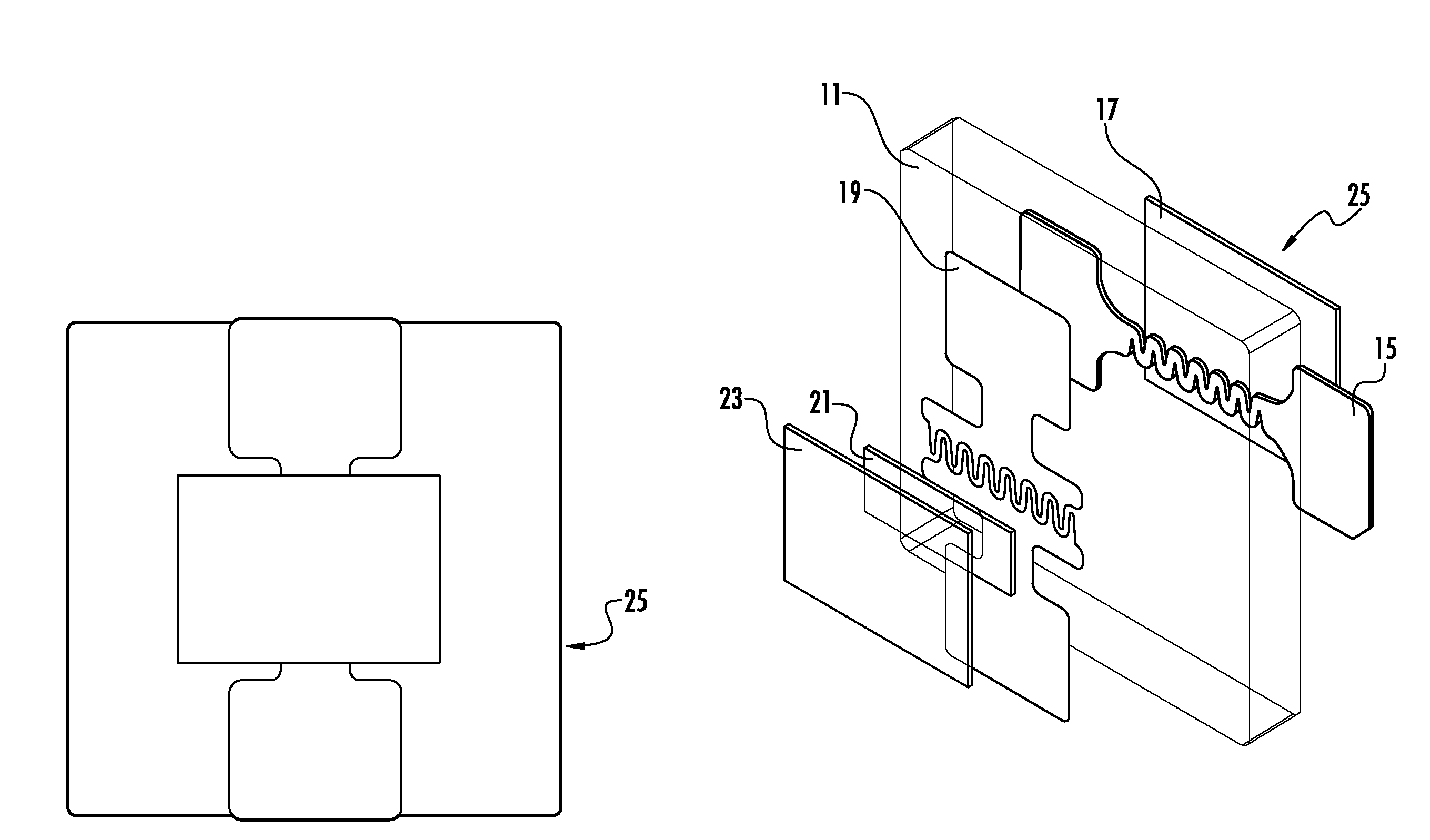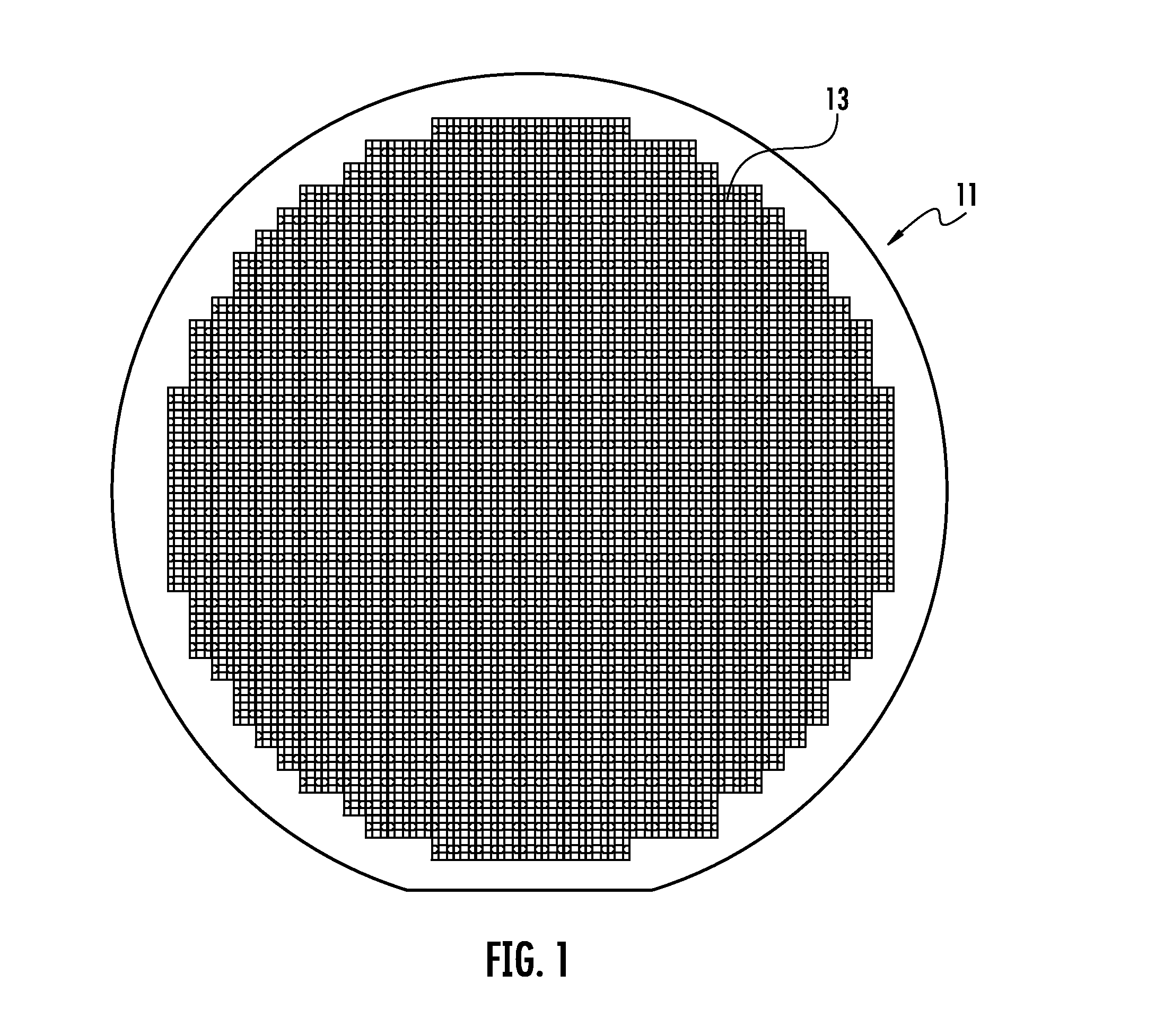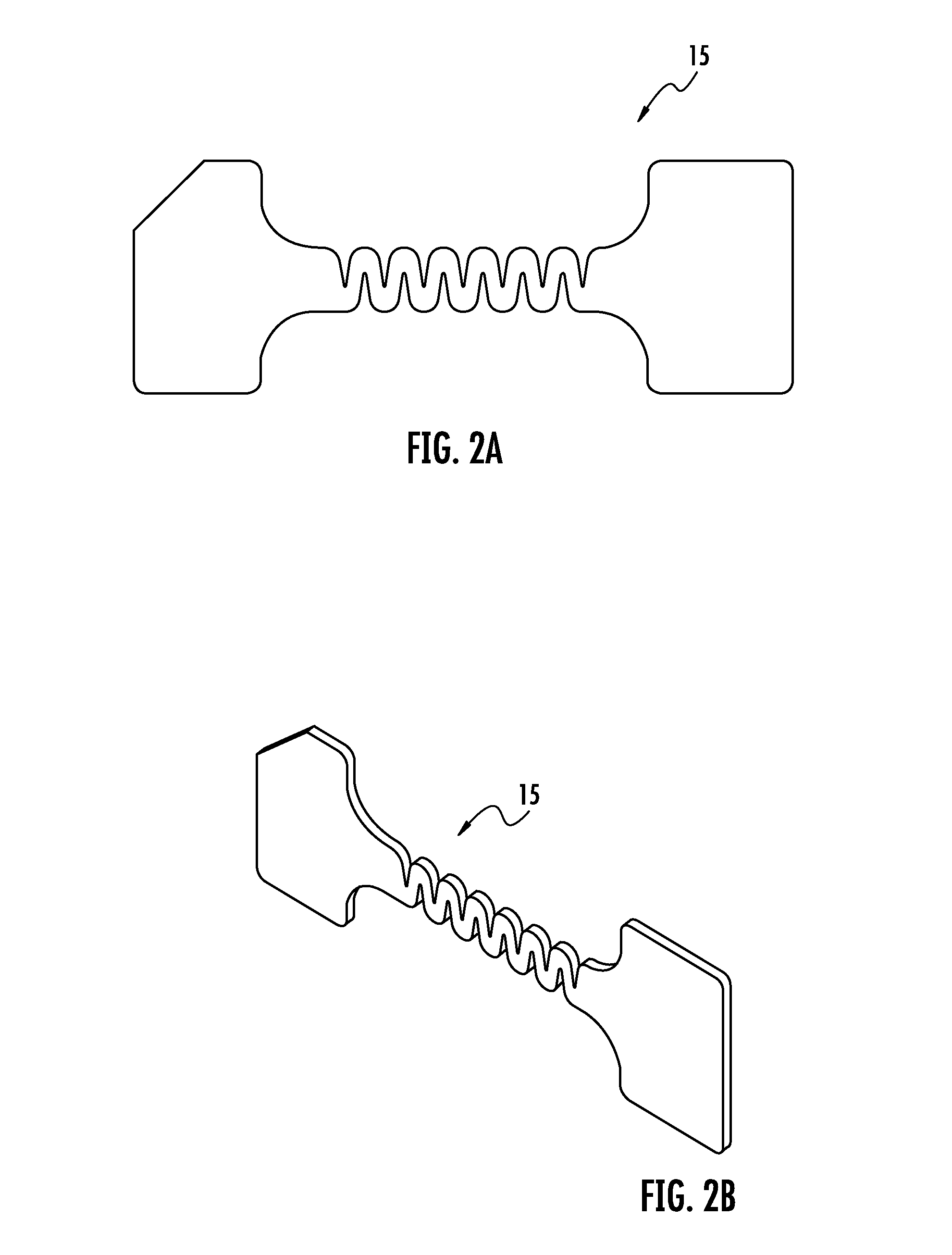Method for Producing a Subminiature "Micro-Chip" Oxygen Sensor for Control of Internal Combustion Engines or Other Combustion Processes, Oxygen Sensor and an Exhaust Safety Switch
a technology of oxygen sensor and microchip, which is applied in the direction of electrical control, instruments, material electrochemical variables, etc., can solve the problems of high cost of sensors, complex circuitry, and inability to meet the requirements of the application, so as to reduce the resistance of the semiconducting portion of the element and minimize the temperature effect
- Summary
- Abstract
- Description
- Claims
- Application Information
AI Technical Summary
Benefits of technology
Problems solved by technology
Method used
Image
Examples
Embodiment Construction
[0037]As shown in FIG. 1, for purposes of illustration only and not limitation, the present invention includes a thin, typically about 0.005″ to about 0.015″ thick ceramic substrate or wafer 11 made primarily of aluminum oxide in a ratio of about 94% to about 99.5% by weight, or other suitable dielectric material upon which multiple elements may be produced by first applying thin heater patterns composed of platinum, palladium, a combination thereof, and / or other suitable materials, and placed thereon. Such suitable dielectrics include but are not limited to boron nitride, steatite (magnesium silicate), zirconium toughened alumina (ZTA), etc. . . .
[0038]The heater patterns, as shown in FIG. 2, can be applied using physical vapor deposition (electron beam or sputtering) or electroless plating, then masking using photolithography techniques followed by chemical etching. Alternatively, the heater pattern 15 can be applied by first masking the substrate using photolithography techniques...
PUM
| Property | Measurement | Unit |
|---|---|---|
| temperature | aaaaa | aaaaa |
| temperature | aaaaa | aaaaa |
| voltage | aaaaa | aaaaa |
Abstract
Description
Claims
Application Information
 Login to View More
Login to View More - R&D
- Intellectual Property
- Life Sciences
- Materials
- Tech Scout
- Unparalleled Data Quality
- Higher Quality Content
- 60% Fewer Hallucinations
Browse by: Latest US Patents, China's latest patents, Technical Efficacy Thesaurus, Application Domain, Technology Topic, Popular Technical Reports.
© 2025 PatSnap. All rights reserved.Legal|Privacy policy|Modern Slavery Act Transparency Statement|Sitemap|About US| Contact US: help@patsnap.com



